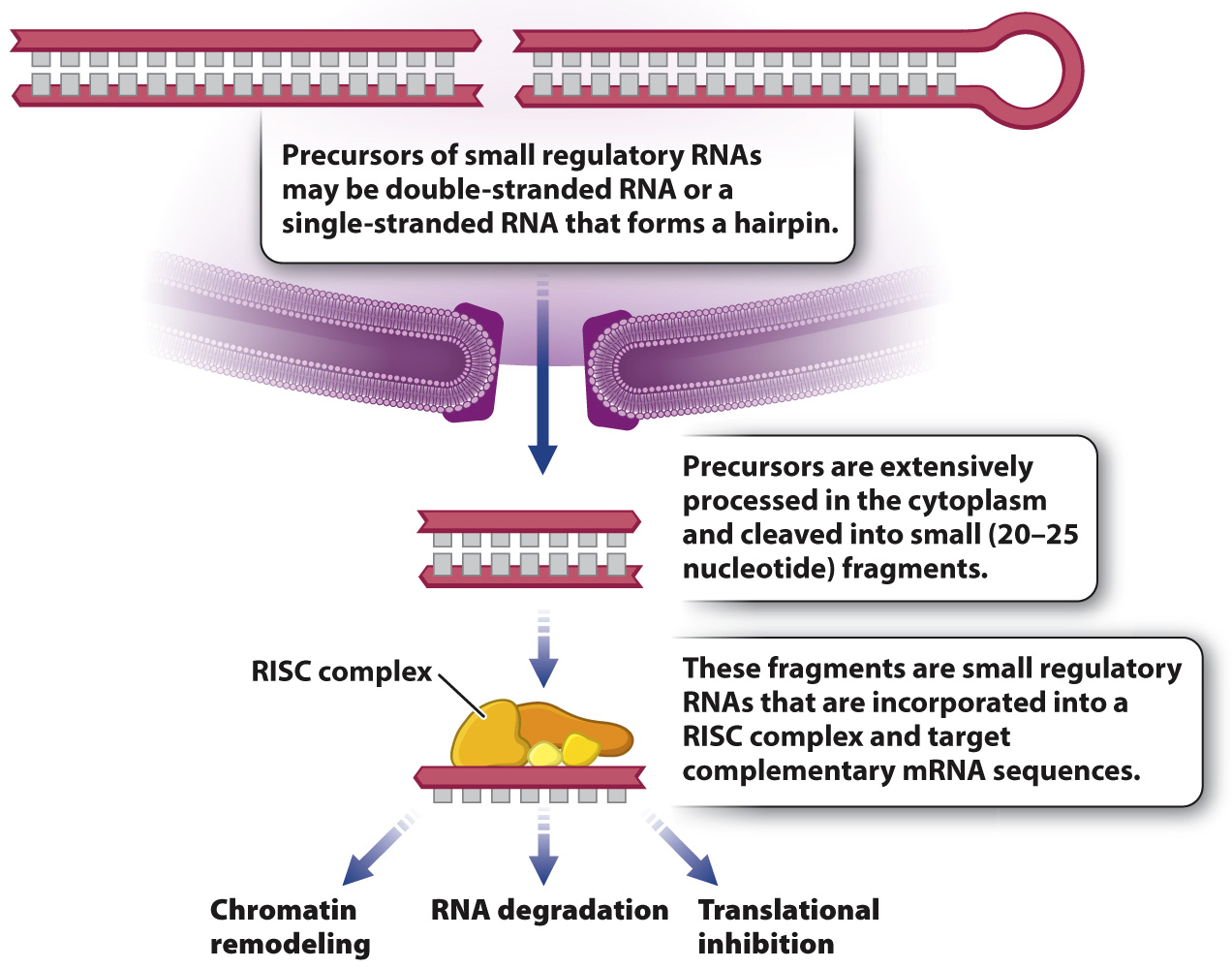Small regulatory RNAs inhibit translation or promote mRNA degradation.
Regulatory RNA molecules known as small regulatory RNAs are among the most exciting recent discoveries in gene regulation. They are of exceptional interest to biologists and drug researchers because their small size allows easy synthesis in the laboratory, and researchers can design their sequences to target transcripts of interest.
Two important types of small regulatory RNAs are known as siRNA (small interfering RNA) and miRNA (microRNA). While they have somewhat different functions, they share similarities in their production (Fig. 19.10). Both types of small RNA are transcribed from DNA and form hairpin structures, or stem-

One of the two strands from each RNA fragment is incorporated into a protein complex known as RISC (RNA-
Regulation by small RNAs is widespread in eukaryotes, and it is thought to have evolved originally as a defense against viruses and transposable elements. These molecules have also evolved to have important regulatory roles in their own right. Human chromosomes are thought to encode about 1000 microRNAs, each of which can target tens or hundreds of mRNA molecules. Half or more of human proteins may have their synthesis regulated in part by such small regulatory RNAs.
Quick Check 2 How do small regulatory RNAs differ from messenger RNA?
Quick Check 2 Answer
Small regulatory RNAs are not translated into proteins (Chapter 3). As a result, they are often called noncoding RNAs since they do not encode for proteins. Their function is often to regulate the expression of other genes. By contrast, mRNAs are translated into proteins.